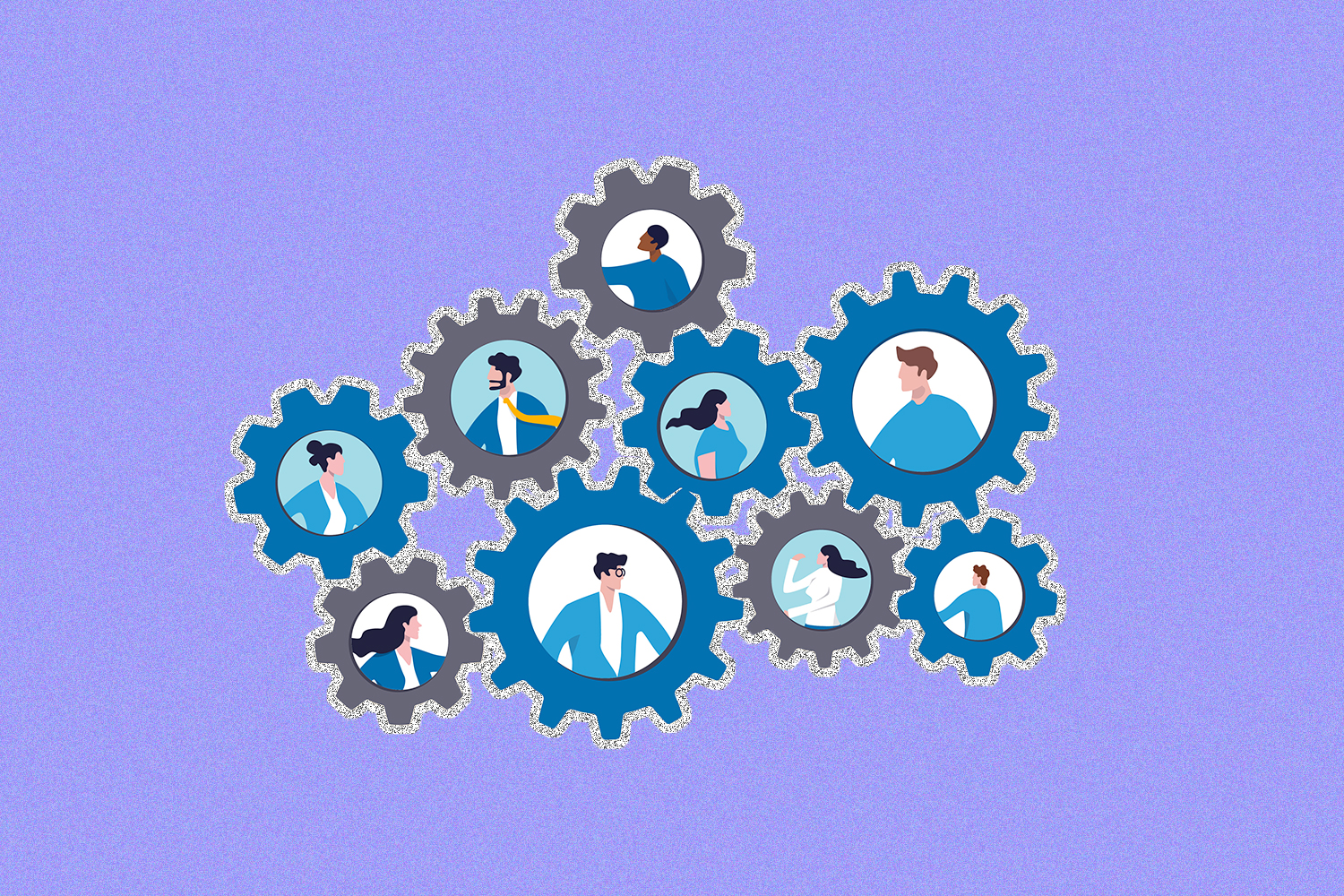Amid the COVID-19 pandemic, anti-Asian American sentiments across the U.S. have been on the rise. Hate crimes against the Asian American and Pacific Islander (AAPI) population increased by 124% in 2020 and 339% in 2021, but discrimination, exploitation, and racism against the AAPI community is nothing new. The Chinese Exclusion Act of 1882 barred Chinese immigrants living in the U.S. from becoming citizens and blocked any additional Chinese immigrants from legally entering the country.
The act was repealed in 1943, and the “Stop Asian Hate” movement began in 2021, but there’s still much to be done. DEI leaders, as you look toward creating a more equitable workforce of the future, it’s important to consider the long-term impact you can have by implementing a company strategy to better recruit and retain AAPI employees.
Senior Executive DEI spoke with diversity leaders across industries to learn how they hire and recruit AAPI employees. Here are five steps to help you get started.
1. Expand your talent pool by engaging AAPI employees at the college and corporate levels.
To start, expand the places in which you search for AAPI talent. An easy place to start is by attending career fairs at Asian American and Native American Pacific Islander-Serving Institutions (AANAPISI). These represent colleges and universities where at least 10% of the undergraduate population identifies as Asian American and Native American Pacific Islander. There are approximately 38 in the U.S., including the University of Illinois Chicago, Berkeley City College, and Middlesex Community College.
AANAPISI offers additional resources, services, and scholarships for AAPI students. Build relationships with these colleges and universities, and their students and staff, by attending career fairs, hosting classes such as a resume-building workshop, and partnering for internship programs.
At Liberty Mutual Insurance, Maura Quinn, VP of early career, DEI, and talent acquisition programs, says the organization’s recruitment efforts “range from leveraging specialized job boards to attending networking events and conferences, like ASCEND, the largest Pan-Asian business professional member organization in North America.”
Ivan Lee, director of DEI at Elastic and Senior Executive DEI Think Tank member, says the software development platform offers three additional places to look for AAPI talent: returnship programs, trade schools, and coding boot camps.
“Tap into your existing talent pools. [Employees in returnship programs] may have left for medical leave, or maternity or paternity leave, or they were denied entrance [to the company] and didn’t get hired; those people need extra support,” Lee says. “People in these groups are often also historically marginalized people.”
He also suggests flagging employees who decide to leave the workforce at the end of an extended leave as “returnship potential” in your HR system. It’s especially important to reengage AAPI employees as they have a higher rate of long-term joblessness than any other racial or ethnic group. According to the U.S. Bureau of Labor Statistics, in 2021, the median duration of unemployment for Asian Americans was 26.6 weeks and 27.9 weeks for Asian men compared with the U.S. average of 22.6 for all Americans.
As coding boot camps and trade schools continue to grow in popularity, Lee recommends hiring graduates from programs like Galvanize, the Forge Institute, and General Assembly. Additionally, there are hundreds of trade schools across the nation with skilled graduates who are ready to join the workforce.
Quinn shares that Liberty Mutual also leverages its employee resource groups (ERGs) to recruit AAPI talent by joining the talent acquisition team at career fairs and building relationships with students and administrators.
“We partner with student groups that provide opportunities to market job opportunities directly and proactively connect with students,” says Quinn. “The relationships [formed with schools and students] are a combination of building brand awareness, investing in our employees’ development, and attracting and hiring external talent.”
2. Educate yourself and train your workforce to dispel misconceptions about AAPI employees and reduce discrimination and bias.
Like other historically marginalized groups, AAPI employees face unconscious biases. Lee shares the “model minority” and white adjacent myths affect how AAPI employees are treated in the workplace, lumping them into one group and assigning them a shared, erroneous identity. In reality, there are nearly 20 million Asian American, U.S.-born citizens in the nation who identify with one of three main ethnic subgroups: East Asian, Southeast Asian, and South Asian, per McKinsey’s “Asian American workers: Diverse outcomes and hidden challenges” report.
Lee explains that white adjacency is the assumption that certain Asian employees have achieved leadership positions because they aligned themselves with white leaders and sustained the status quo. It plays into the false narrative that Asians are the “model minority” and have been accepted into leadership as long as they “don’t cause too much stir” and “stay quiet.” Furthermore, the model minority myth is a narrative that perpetuates that all AAPI people are successful, high achievers who will work hard without pushing back.
Dismantling the idea of white adjacency and the model minority within your organization is a crucial step to ensuring all groups are represented fairly and equally. Lee advises leaders to organize training sessions and workshops that teach employees about allyship and the different misconceptions to break the cycle that perpetuates these stereotypes.
Lee adds that the bamboo ceiling, adjacent to the glass ceiling, is a third phenomenon holding back AAPI employees. It’s a metaphor for the barriers that keep AAPI employees from progressing in their careers and earning leadership positions. (It should be noted, however, the phrase is considered controversial by some.)
In addition to training sessions covering unconscious biases, microaggressions, and how to be an ally, Kendra Mack, the VP of DEIB at Kanarys, a tech company that provides DEI data, suggests taking it a step further.
“Go beyond training by having coaching and activities where managers and leaders, specifically, can talk through their roadblocks in certain areas in a safe space,” Mack says. “Not just a blanket training, but an opportunity for them to ask questions in a safe space where they can get understanding without feeling judged for asking them.”
3. Assess AAPI representation across leadership roles to ensure AAPI employees are being fairly promoted.
The McKinsey report also found that promotions for AAPI employees drop after they reach the manager level. Despite representing 6.4% of employees at the senior VP level, 4.1% of AAPI employees are promoted to the C-suite. These numbers dip lower when accounting for AAPI women. Although they represent 2.5% of employees at the senior VP level, just .7% of AAPI women are promoted to the C-suite.
To increase the representation of AAPI employees at the executive and C-suite levels, Lee recommends rotational and leadership development programs in addition to leveraging an AAPI ERG, which we’ll touch on later.
“Rotational programs are key to increasing underrepresented talent and promoting them from, at least, lower- to mid-management positions,” Lee says. “The unique challenge to Asians includes the additional education that’s required to the company and to decision-makers and hiring managers.”
That’s where the education and training tools we outlined in the previous section come into play.
“These stereotypes and microaggressions [against AAPI employees] limit career growth for them,” Mack says. “Also, [lack of] representation, when you are one of one or one of few, and you’re getting lumped in with other groups or you don’t have a unique voice because you’re surrounded by team members who might not understand your experience or are not seeking to understand your experience, these can play a role in AAPI employees [not] getting development and leadership opportunities and more responsibility in the workplace.”
4. Disaggregate your AAPI employee data to understand the individual ethnic groups that make up the population instead of treating it like a monolithic group.
To understand where you’re falling short in promoting AAPI employees, you have to look at the data. Not only that, Lee recommends disaggregating the data by using your organization’s human resource information system (HRIS), or other employee data, to categorize employees into granular ethnic or demographic groups beyond broad racial categories. For example, offer employees the option to self-identify as one of the 50 distinct ethnic groups that fall under the AAPI umbrella.
Then, analyze representation trends across the disaggregated groups and compare them to ethnicities across your organization to identify where AAPI employees, or other ethnicities, are underrepresented. That’s where you should target leadership development and mentorship programs.
For example, in its 2022 Diversity Scorecard Report, Cigna, an insurance company, breaks down the racial and ethnic makeup of executive-, mid-, and entry-level employees in addition to its board of directors. It uses this data to set goals like improving ethnic minority representation in management and senior leadership roles and reaching gender parity in its leadership pipeline by increasing the number of women at its director and senior director levels to 50% by the end of 2024.
While Asians make up 20% of Cigna’s board of directors — second to white members at 70% — Asian representation within the organization is highest at the mid-level at 11%, but that decreases to 7% at the executive level. This shows there’s room for improvement in promoting AAPI employees to the executive and C-suite levels within the organization.
Mack adds companies should also measure AAPI employees’ sentiment and belonging using a net promoter score (NPS), which asks them to rate initiatives, for example, on a scale of one to 10. Some questions you can ask include:
- Do you feel like you belong?
- Do you feel like you’re being viewed equitably for promotions?
- Do you feel like you could be at this company for a long time?
- Is this a place you would recommend to other employees who share your ethnic identity?
The answers to these questions will help you understand what you need to improve and whether your employees think your practices and policies are equitable. Some questions Mack recommends asking AAPI employees to help you understand where your practices and policies stand are:
- Do our benefits reflect our employee population?
- Do we equally celebrate and value the different heritage months and the different heritages that make up our employee base?
- Are our promotions and hiring policies equitable?
- Are there processes in place to ensure different situations are handled equitably?
5. Leverage employee resource groups and pay leaders for their contributions toward creating an inclusive work culture.
As a result of the perpetual foreign misconception about Asian Americans, McKinsey’s report also found that AAPI employees experience less feelings of inclusion and lower levels of fairness, receive less support at work than their white colleagues, and feel less able to be themselves at work. They also feel their sponsors aren’t effectively creating opportunities for them to grow.
In addition to providing sponsorship and mentorship opportunities for AAPI employees, leverage your employee resource groups. Niladri Sannigrahi, senior director of portfolio and risk management at Liberty Mutual, also serves as the national co-chair of its LEAAP@Liberty ERG for Asian employees and allies. (LEAAP stands for leading and empowering Asian and ally professionals.)
“[The LEAAP ERG members] had a goal to raise awareness, bring the cultural differences together, and then celebrate them in an effort to drive engagement and in an effort to drive the development of talent within Liberty,” Sannigrahi says.
In addition to spotlighting cultural holidays, like the Lunar New Year and Diwali, Liberty Mutual emphasizes its nuances to ensure AAPI employees from all backgrounds feel seen and included. For example, Diwali is celebrated not just in India but across several countries, including Fiji, Singapore, and Nepal. LEAAP may host one-off events that showcase how each country celebrates the holiday, and if employees want to learn more, LEAAP serves as a connector between Liberty’s 50,000 employees across 29 countries.
The group is also constantly learning and reiterating their programming. Following every major event, Sannigrahi says employees are sent a standard survey, typically answered by 50 to 100 respondents, to help them understand what they did right and how they can improve.
Liberty Mutual asks ERG members to participate in networking events, speaking engagements, and panel discussions at conferences to find and recruit AAPI employees.
“We also have an ERG referral program that provides a direct channel for employees who are members of our employee resource groups to refer external talent,” Quinn adds.
At Elastic, Lee shares ERG leaders are not only compensated for their work but also given access to professional development workshops, including coaching provided by leadership development specialists. These opportunities are paid for by Elastic.
“[ERG leaders] have both internal support from within the company and external support from outside the company,” Lee says. “That helps [AAPI ERG leaders] feel less tokenized.”






